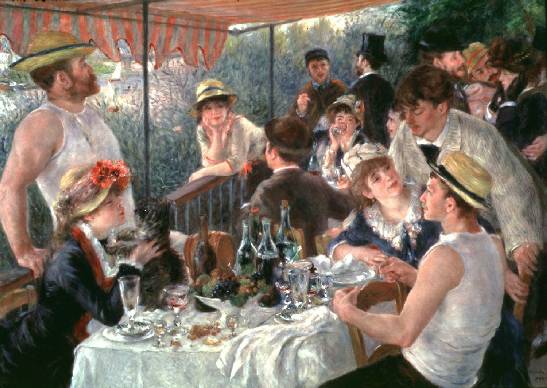 We had a great crowd of parents, kids and staff at our "Parents Night" dinner celebrating our "food appreciation" classes. With staff plating the food and kids running the plates to the tables, everything moved like clockwork.
We had a great crowd of parents, kids and staff at our "Parents Night" dinner celebrating our "food appreciation" classes. With staff plating the food and kids running the plates to the tables, everything moved like clockwork.As you can see, there's nothing terribly fancy about the dining room. But we do dress the table with place mats drawn by the kids and laminated, plus laminated menus. And this year, you might be able to discern on the table a number of our pickles and preserves. We grouped jars of our dill pickles, sweet pickled green tomatoes, pickled watermelon rinds and pickled pumpkin. Plus, there were jars of apple butter and hot pepper vinegar to go with a very Southern menu:
Hoppin' John (beans & rice)
Collard Greens
Fresh Apple Sauce
Buttermilk Biscuits
Dessert: Apple
We urged the parents to take any leftover pickles home. And we had a selection by the door as well. There was no secret which one they liked best. "Hey, Ed!" Cried one group of parents. "We're on our second jar of green tomatoes!"
Well, I love the pickled green tomatoes as well. But my favorite may be the swee
 t pickled watermelon rinds, flavored with cardamom seeds. They are nearly irresistible.
t pickled watermelon rinds, flavored with cardamom seeds. They are nearly irresistible.The menu represents the beginning of our the virtual world culinary tour in this year's "food appreciation" classes. We started right here in the District of Columbia by pickling and canning our favorite produce. Then we started south, making all sorts of apple recipes in the Shenandoah Valley, then into North Carolina for skillet corn bread, the to Low Country for Hoppin' John and deeper into The South for our collard greens.
I would never have expected this meal to be so popular. But people were coming back to the food line for seconds and thirds. They were so disappointed when we finally served the last of the biscuits.
But there's not a spare moment to gloat over our success. It's already time to start planning for this week's food adventure....




















